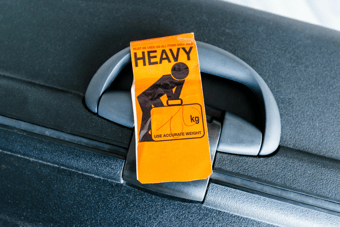 Many consumers want to know how much weight can a dispatch console can handle? (As well as, will be able to hold their dispatchers’ when they ride up and down on it?)
Many consumers want to know how much weight can a dispatch console can handle? (As well as, will be able to hold their dispatchers’ when they ride up and down on it?)
In reality, it boils down to whether or not the dispatch console will hold up for 24/7 use. There are a few philosophies on how to achieve this durability. As with everything in life, there is give and take with the way each manufacturer designs their furniture.
Most dispatch furniture manufacturing companies use LINAK lift columns. They have a few different models, but there are two main ones used in the dispatch arena; the most common is the DL4 lift column. It has a 700N (newtons) lifting capacity, which translates into 157 pounds. I know some of you might think 157 pounds will not cut it, and you are right. However, keep in mind that is for one lift column. Most tables or workstations use 2, 3, or even 4 so that you do get more lifting capacity, but this is not a case where 157 x 4 = 628. Why does this not add up? It is due to the amount of power that is pushed through the control boxes. The transformer only has so much power to push those lift columns with. This is not a problem as most 911 dispatch consoles will push about 350 pounds with 2, 3, or 4 lift columns.
Is 350 pounds enough? Let’s add up the determining factors:
-
The work surface can weigh anywhere between 50 to 100 pounds (for the large single surface stations).
-
Monitor arms weigh about 10 pounds apiece so multiply that by the number of monitors you have usually the minimum is 5. So we can say at a minimum, 50 pounds and a max of about 100 pounds. (Never hurts to plan for the future.)
-
The monitors themselves typically weigh about 7 pounds each for a 21” monitor. 7 x 5 is 35 pounds at the minimum and up to 70 pounds at the most. So what about some of the larger 39" 4K screens that some agencies are using? These are about 30 pounds each.
So a loaded dispatch console will have about 100 pounds of monitors, 100 pounds of worksurface, and 70 pounds of monitors for a total of approximately 270 pounds. Add in lights or anything that gets hung under the work surface and you are getting close to the max weight. The kicker is a heavy slat wall on the back of the surface. The early slat walls bent with the weight of the arm and monitor so they had to be built with a heavier gauge of steel adding more weight.
In the next column we see the LINAK DL2. This is a big, heavy-duty column, which lifts 2,500N or 562 pounds per column. That sounds great, doesn’t it? Well, there are trade-offs compared to the DL4. The DL2 travels at half the speed of the DL4 and takes about 30 seconds to go through the entire range. (This does not go over well with our ADHD crowd.) The other trade-off is that it does not go low enough to fit the shorter users; this unit will only go low enough for those who are about 5’4”. The trade-off is 1,100 pounds lifting capacity for worse ergonomics and a lifting speed that enters into the “why bother” range because it’s so slow.
So, is the amount of weight going up and down the most important factor when it comes to the longevity of a dispatch console lift column? No, there are other factors that also play an important role:
-
Leverage from a cantilevered work surface is a critical point to consider. This is where the columns are at the back of the station, and a large single surface hangs out in front of them. The lift columns do not do well with the extreme, uneven weight balance.
-
Does the lift column have a good collision detection system? The modern ones use a piezoelectric sensor that senses twists in the work surface. This is much more sensitive than the older models that relied on a spike in amperage. Repeated bumps into the high amperage range wear on the motor and the electronics.
-
More important than lifting capacity is static capacity. What is the maximum weight it can hold when someone sits on the edge or leans on the surface? There is nothing wrong with being on the safe side, and 500 pounds is a pretty safe weight limit to aim for.
LINAK is not the only manufacturer that supplies to the 24/7 market. There are others, and they also work well. What you need to ask to get past the “sales guy pitch” is how much weight will it lift after you account for the work surface, slatwall, monitors and monitor mounts?



